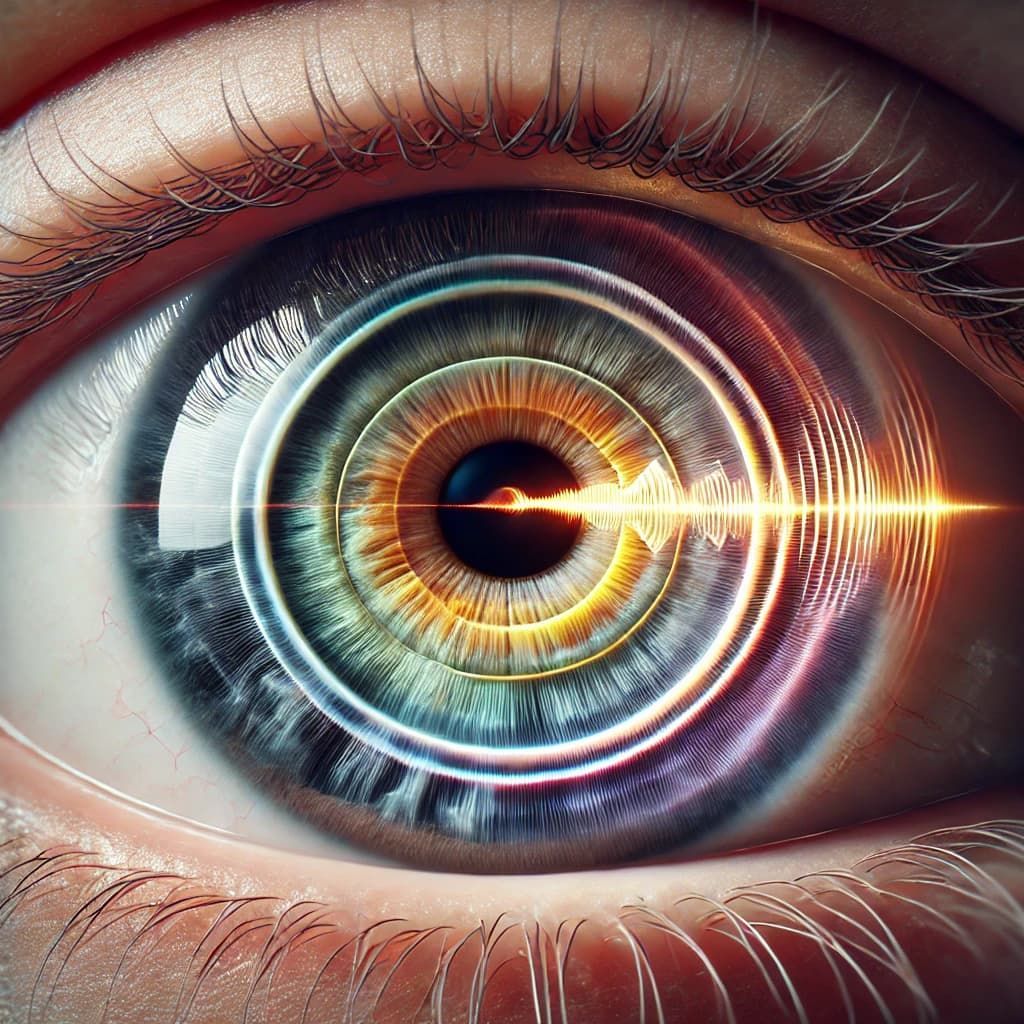Why Sound is More Than Numbers: The Hidden Limitations of Hertz
Revisiting the Theory of Frequency: A Broader Perspective on Sound

In our modern understanding of physics and audio engineering, frequency plays a central role. We measure sound in Hertz, we talk about wavelengths, and we create digital systems that neatly sample these “oscillations” at fixed rates. This Theory of Frequency has proven incredibly useful, from designing musical instruments to transmitting data across the globe. Yet, it’s important to recognise that sound itself is much more than just a frequency spectrum, and that attaching Hz or “wave cycles” to it can sometimes obscure the richer phenomena at play, like resonance, environmental interactions, and the fluid nature of how sound propagates in the real world.
The Usefulness of Frequency
In its simplest form, frequency tells us how many oscillations per second we’re dealing with, whether for a vibrating guitar string or a radio wave. It’s a powerful concept because it allows us to:
- Model Waves Mathematically: In a lab or a recording studio, we can break a complex sound into discrete frequency components (via Fourier analysis).
- Build Audio Systems: Our digital devices (microphones, sound cards) sample audio signals at a set number of samples per second (kHz). This makes the data easy to store, manipulate, and reproduce.
- Design Instruments & Environments: Tuning systems, acoustical engineering, speaker design, all rely on understanding the frequency response of physical objects.
In these technical applications, frequency-based thinking has indeed revolutionised how we record, amplify, and transmit sound.
Sound Is Not Just Frequency
However, describing sound purely in terms of frequency can be limiting. A simple “slice” of the audio spectrum at any given moment doesn’t capture:
- Resonance in Real Spaces: Sound waves interact with environments, walls, objects, other sound sources, in ways that create complex resonance patterns. A single frequency measurement may ignore how these patterns evolve and respond dynamically.
- Lived Experience & Physical Presence: In nature, sound isn’t chopped up into neat slices (Hz). It’s a continuous wave phenomenon that blends energy, medium, and environment in real time.
- Universality of ‘Wave Descriptions’: Strictly speaking, anything oscillatory can be assigned a “frequency” or “wavelength.” That doesn’t mean it’s the best descriptor neither emitter. The same wave-based math we apply to sound could be applied to seismic events, electromagnetic signals, or even cycles of biological rhythms. Sound is not inherently frequency-limited; that’s just one convenient lens.
In other words, frequency is a superb tool—but only part of the story. The natural world is deeply resonant and interwoven, and focusing on discrete Hertz values risks flattening that complexity into a single, one-dimensional measure.
A Constructed “Space” of Waves
One could argue that frequency and wavelength form a mathematical space that did not exist before we defined it. This is especially true in digital contexts:
- Digital Encoding: Once sound is digitised (sampled in bits at a rate measured in Hz), it enters an abstract domain, essentially a constructed space, that bears no direct physicality. It’s a numerical representation, eventually rendered audibly via speakers, or visually via screens.
- Colour at the Core: From early television to modern displays, colour has been intrinsic in how we represent information on screens. All digital data—text, images, or waveforms—inevitably ends up as some form of “color-coded” representation (even if it’s just grayscale pixels). This is another example of how the digital realm relies on artificially defined parameters (RGB channels, refresh rates, etc.), not pure, unfiltered reality.
Thus, the Theory of Frequency underpins our digital systems for convenience. Yet as soon as we step back and look at real-world sound, propagating in a physical environment, shaped by resonance and interaction, the standard frequency map (in Hz) is just one slice of a much bigger phenomenon.
Beyond Timbre: Reclaiming Resonance
Real-world acoustics involve resonance, space, and dynamic interaction, all of which transcend the neat packaging of digital sampling rates. It’s how a violin body amplifies the vibration of strings, how a concert hall’s architecture sculpts the voice of a choir, and how a single note can cause a sympathetic vibration in a nearby object. Focusing solely on a “frequency chart” can downplay or even miss these non-linear phenomena, where materials, airflow, and temperature shifts constantly reshape the sonic landscape. In traditional audio theory, timbre is often treated as a catch-all concept, everything about a sound that isn’t pitch or loudness. Because of this breadth, the term can become vague, obscuring the intricate resonance patterns and the physical-environmental factors at play. By looking beyond timbre’s one-size-fits-all label, we can appreciate the full complexity of how sound truly behaves and open up new ways to measure and represent it outside the classic frequency framework.
Focusing purely on a “frequency chart” can downplay or even miss:
- Non-Linear Interactions: Real materials vibrate in more complex patterns than a simple “sine wave.”
- Environmental Response: Moving air, temperature changes, humidity, these all affect the propagation and timbre of sound.
- Creative Dynamism: Improvised music, natural soundscapes, and living creatures produce waveforms that defy clean, static frequency bins.
Redefining Colour Without Frequency
When we talk about “frequency,” we’re often imagining a flat, one-dimensional axis, whereas sound contains depth, context, and synergy. Conventionally, colour in physics is also linked to frequency (e.g., “red light” corresponds to some hundreds of terahertz). But for artistic or conceptual approaches, especially when bridging the gap between sound and colour, the standard electromagnetic “λf” equation might be less relevant. We can propose:
- A New Measurement System: One that acknowledges frequency as one possible reference but doesn’t confine all phenomena to fixed Hz increments.
- Colour as a Broader Canvas: Treating colour as a free space for representation, where “hue,” “saturation,” and “luminosity” can form the basis of how we map or measure sound.
- Multidimensional Perception: Recognising that both light and sound behave in ways that surpass linear frequency models, especially when we consider environmental resonance, human perception, and creative expression.
Conclusion: A Future Beyond Flat Sound Systems
In the end, frequency analysis and Hz are indispensable for many technical applications. But it’s a mistake to think these constructs capture the entire essence of sound. Real-world acoustics involve resonance, space, and dynamic interaction, all of which transcend the neat packaging of digital sampling rates. Moving forward, we aim to expand our measurement paradigm for sound, acknowledging frequency as a handy tool while also embracing alternative views, particularly colour-based or multi-dimensional representations, that reflect the organic complexity of resonance. This holistic approach lets us integrate sound more naturally with our lived environments, bridging the creative and technical dimensions in ways that flattened frequency charts can only hint at.
“We believe there’s more to sound than just a number of cycles per second—and more to colour than just electromagnetic wavelengths. By rethinking these concepts, we hope to open up new realms for audio, art, and beyond.”
Thank you for taking the time to read, Tantra Sound Team.












